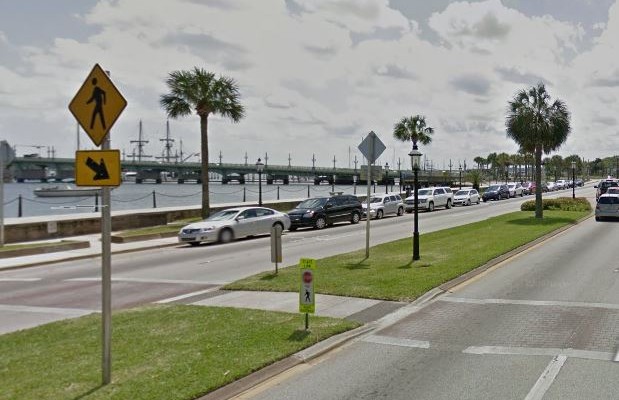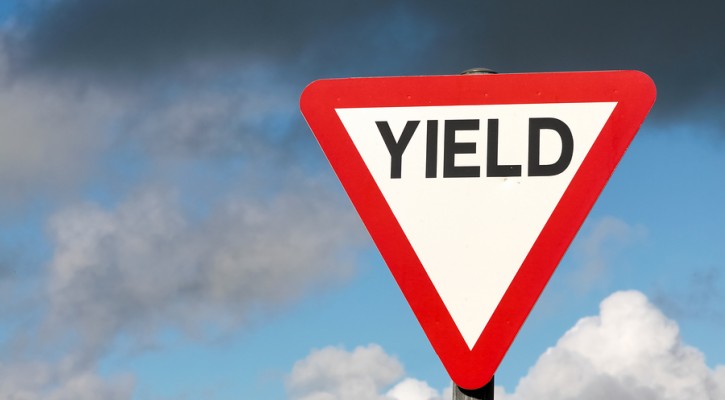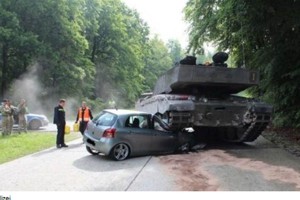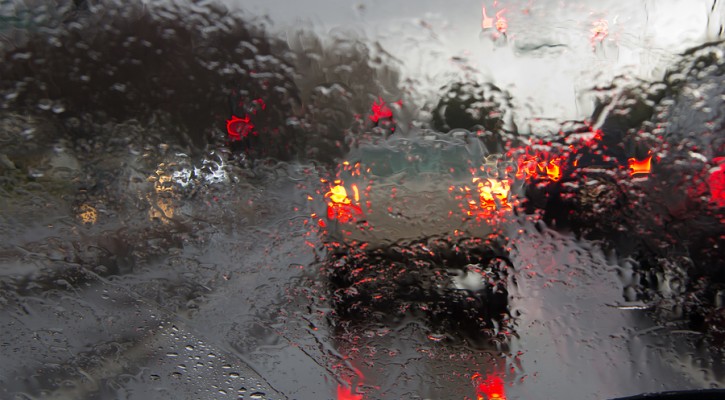Category Archive: Ask The Traffic School Instructor

Ask The Traffic School Instructor: Do Pedestrians Always Have The Right-Of-Way?
January 13, 2016
Question: I was attending a work related safety training session and the instructor said that, in Florida, pedestrians don’t have the right of way. Is that true?
Answer: For the most part, no, it isn’t true but it depends on the circumstances.
First off, we have to look at the term “right-of-way.” There’s a lot of confusion about that term and people tend to think in terms of who has the right-of-way in a given situation when, in fact, no one has the right-of-way. The law doesn’t give anyone the right-of-way; it only says who should give up or yield the right-of-way to another. You can’t take the right-of-way, you can only give it to someone else and the law lists the circumstances in which a driver should give up the right-of-way to another.
Let’s look first at what the law requires of pedestrians:
- On roadways where there’s a sidewalk, pedestrians must stay off the paved portion of the roadway reserved for vehicles.
- If there’s no sidewalk, pedestrians are required to walk on the shoulder on the left side of the road facing oncoming traffic.
- Pedestrians are only allowed to cross the roadway at a marked crosswalk or at an unmarked crosswalk at an intersection. (Even if it’s not marked, the area next to an intersection is considered to be a crosswalk.)
- Pedestrians are required to obey all traffic signals and signs just like drivers.
- Even if they’re crossing at a marked or unmarked crosswalk, pedestrians are required to give up the right-of-way if a vehicle is approaching so closely that it wouldn’t be possible for it to safely stop in time.
Now let’s look at those times when drivers are required to give up the right-of-way to pedestrians:
- Drivers are required to yield the right-of-way by slowing or stopping, if necessary, when a pedestrian is crossing the street in a marked or unmarked crosswalk.
- If a pedestrian is crossing the street at a crosswalk and is on the driver’s side of the road or will be on the driver’s side of the road by the time the driver gets there, the driver is required to slow and stop, if necessary, for the pedestrian to pass.
- On a multi-lane roadway, if a driver ahead has stopped for a pedestrian in the crosswalk, drivers approaching in the other lanes must also stop until the pedestrian has safely crossed.
- When a driver is entering the roadway from a parking lot, driveway, or alley, the driver must yield to pedestrians on the sidewalk before proceeding.
- When turning a corner, drivers must yield to pedestrians who are already in the crosswalk.
Special circumstances:
If a blind or visually impaired pedestrian, using a white cane or guided by a guide dog, is attempting to cross the street, whether at a crosswalk or not, all traffic in both directions must come to a complete stop.
Watch for children:
Watch out for children, especially near schools, parks, and residential zones. Kids are in their own little world and they don’t care what the law says.
Vulnerable road users
A new law went into effect in Florida a couple of years ago that lists those who are regarded as vulnerable road users. Vulnerable road users include:
- Pedestrians, including those working on the roadway
- Users of bicycles, mopeds, or scooters
- Skaters and skateboarders
- Horse drawn carriages
- Motorcyclists
- Someone riding an animal
- Users of electric mobility assistance devices
- Users of wheelchairs
- Tractors or other vehicles designed for farm use
The new law requires motorists who are involved in a crash with a vulnerable road user to stop and render aid. Those who fail to do so will face severe penalties.
The lists above don’t include every instance covered under the law, just the basic ones. To see what Florida law says about pedestrians, read: The 2015 Florida Statutes – 316.130 Pedestrians; traffic regulations.—

Ask The Driving School Instructor: Failure To Yield
June 3, 2015
Question: What exactly does failure to yield mean and when does it apply?
Answer: Failure to yield can apply in several different situations but basically, if another driver has to swerve or slam on the brakes to avoid hitting you, you’re guilty of failure to yield. Let’s look at some different situations where failure to yield can come into play.
The 18 year old German girl driving the car in the photo below tried to turn onto a street that is heavily used by military vehicles at a nearby British army base. A military convoy was passing by when she tried to enter the road and, for some mysterious reason, probably involving the laws of physics, the driver of a 68 ton Challenger tank was unable to stop in time. The front half of her car was crushed under the tank. She was guilty of failure to yield.
 http://www.nbcnews.com/news/world/young-drivers-car-crushed-british-tank-augustdorf-germany-n368211
http://www.nbcnews.com/news/world/young-drivers-car-crushed-british-tank-augustdorf-germany-n368211
One mistake people make, especially where large vehicles are concerned, is judging their speed. Large vehicles like buses, trucks, and Challenger tanks appear to be going much slower than they actually are. This is especially true for trains. The passengers of the car in the video below were lucky that no one died when the speeding driver tried to beat a train at a railroad crossing. The car was cut in half and the rear seat passenger was thrown out of the vehicle.
A vehicle entering an interstate highway must yield to the traffic already on the main road. That means matching the speed of the traffic on the main part of the road and looking for an opening large enough that will allow you to enter safely. To do that, you should look for an opening of at least four seconds between vehicles so that there’s at least a two second distance between you and the car behind.
Remember that no one has the right of way. The law only determines who should give up the right of way in any given situation. If you aren’t sure whether you have room to enter traffic safely, wait!

Ask The Traffic School Instructor: Ticket From Another State
October 14, 2014
Question: If I get a ticket in another state is it reported to my home state?
Answer: In most cases, yes. Not only is it reported but your insurance company will also have access to the records.
Forty three states and the District of Columbia belong to what is known as the Driver’s License Compact. The theme of this compact is “One Driver, One License, One Record.” Most, but not all members of the compact treat the violation as if it happened in your home state. That means that points will be assessed and in the case of serious violations such as DUI or vehicular manslaughter, your license will be suspended or revoked.
As I said, most but not all states treat violations as if they happened in the home state. Some states may consider some reported traffic violations as minor and not assign points. Other states may not only treat the violation as more serious but may apply more points to your record than the reporting state would have. New York treats tickets received in the Canadian provinces of Quebec and Ontario as a New York violation. All states have agreed to suspend your license if you fail to pay the ticket or appear in court in the state that issued the ticket
Even though they don’t officially belong to the compact, states like Georgia, Michigan, and Wisconsin may still report traffic tickets to the home state and accept reports of tickets from other states.
From my own experience as a former driver license examiner for the State of Florida, when someone moves to Florida and wants to transfer their license, the first thing the examiner does is to check the applicant’s driving record in their old state. The states communicate with each other.
As a driving school instructor, I’ve had quite a few students in my classes who received their tickets in other states and wanted to remove the points from their Florida driving record.
Insurance companies don’t belong to the compact and it doesn’t matter to them where you got the ticket or whether your home state considers it as a serious violation or not. If there’s a violation on your driving record from any state, they can raise your rates. Your driving record is public information that anyone can access and the insurance companies use that information when setting your rates. The only way to prevent that is if your home state has a law like the one in Florida that prevents them from raising your rates if you qualify to attend traffic school.

Ask The Traffic School Instructor: Pets In Cars
October 7, 2014
Question: Is it unsafe to drive with pets in cars?
Answer: It depends on how you transport the animal. Driving with unrestrained pets in a car can be dangerous for both you and the animal.
No matter how well trained an animal may be, they’re always unpredictable. It’s impossible to tell when something may be so enticing or frightening to an animal that it’s worth jumping out the window or clawing up the driver to escape. I’ll speak from a couple of my own experiences and hard learned lessons.
Many, many years ago we had a small terrier who used to accompany us when we ran errands or traveled. She had a lot of experience in the car and had never been a problem until one fateful day. We were traveling to a garden store that just happened to be across the street from her vet’s office. As soon as I turned the corner, even without looking out the window, she knew we were headed in the direction of the vet and she made a break for it by jumping out the open window into the middle of a very busy intersection. Fortunately, I was able to stop and other traffic cooperated by stopping long enough for me to catch her and get her safely back into the car.
On another occasion, we decided to get a kitten for our daughter. She had chosen a tiny kitten from a litter and we were on our way home on an interstate highway. So far, the sweet, tiny little kitten had remained very calm but, as I approached a toll booth, something spooked him. He raced right up my chest and dug his tiny, very sharp little claws into my face and held on for dear life. Luckily, there was very little traffic and I was already slowing for the toll booth. I had to steer with one hand and try to see around his body as I fought to rip his claws from my face. My three year old daughter thought it was hilarious.
If you’re the type of driver who likes to drive with pets in your lap, you might be heading for a big distraction if that pet wants to suddenly jump up and look out the window or try to escape. If a cat gets spooked in any way, you can count on being clawed as he tries to escape.
Even if the animal is calm and resting, if you have to suddenly hit the brakes, the animal is going to go flying into or under the dashboard; possibly interfering with your control of the gas and brake pedals. Depending on your speed at the time, it could lead to serious injuries for the animal.
Just like people, pets need to be restrained while in a car; either in a carrying case or by use of a halter designed to work with the seat belts. Now, when I travel out of state with my dog, she wears a travel harness and is clipped in to a D-ring in the cargo area behind the back seat. That’s the only way she has ever traveled. She’s used to it and remains very calm on our trips. It’s the best way to travel with a pet for both her safety and mine.

Ask The Traffic School Instructor: Emergency Flashers
October 1, 2014
Question: Should You use your emergency flashers when it is raining hard?
Answer: This is a common sight, especially in the South where heavy summer thunderstorms hit often. Driving with your emergency flashers on is not only illegal, it’s a really bad idea.
Emergency flashers are only supposed to be used on disabled vehicles to warn other drivers away. They can’t be used in the rain or to identify slow moving vehicles and there are good reasons for this.
Having personally witnessed multiple drivers using their flashers in heavy traffic during a rain storm, I can tell you it made it very confusing for me and, I’m sure, other drivers. The flashers made it hard to tell the difference between the vehicle’s emergency flashers and the brake lights. Determining when the brake lights came on was even more difficult because people tend to ignore the lights on a vehicle whose lights are continually flashing. It also makes it difficult to distinguish between a vehicle that is moving and one that may actually be disabled and stopped. With the lowered visibility due to the rain, the flashers just added to the hazards.
If it’s raining so hard that visibility is reduced to the point where you can’t see other traffic, drivers should pull off the road and wait until the storm passes. If you pull off the road and stop, then the emergency flashers can and should be used.
Using your emergency flashers to indicate that you are driving slower than other traffic is also illegal. Vehicles with mattresses tied to the roof with string or cars running on less than all cylinders don’t belong on the road. If you need to carry something that won’t fit inside your vehicle, you need to rent a trailer or a van. If your vehicle is unable, for whatever reason, to keep up with the flow of traffic, you should also stay off the road until the condition can be fixed.
